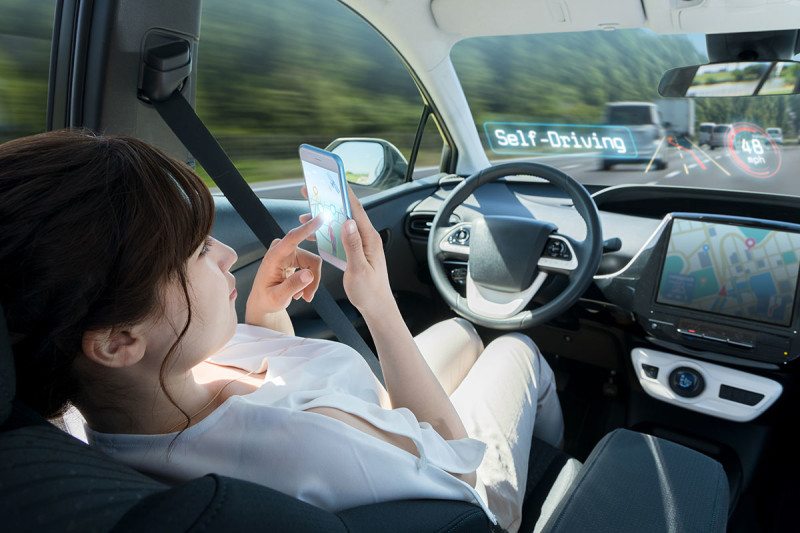In the modern urban life, it can be said that having a car is necessary for one’s life. Whether it is used to drive to work, to school, or to take children to their many activities, most average adults today own cars. Owning cars then produces a need for parking spaces – especially in the busy streets of an urban city. In the article, “No Parking Here” (2016) the author, Clive Thompson, discusses how self-driving cars could reduce the number of parking spaces in cities, using the car’s precise parking technology as well as the concept of having the vehicle constantly running, which would prevent it from taking up room in parking lots. Although the increase in driverless cars could reduce the parking spaces in cities, the implementation of this could run into many economic, environmental, and safety issues as Thompson did not take these issues into account enough.
“No Parking Here,” addresses many current issues and concepts relating to vehicles. Thompson first mentioned the University of California-Berkeley’s studies that, “[the United States of America] has roughly four times more parking spaces than vehicles” (1). There are large areas that are preoccupied with unused parking lots all over the country, that could be used to build homes or buildings. While there is an abundance of parking spaces in the country, the United States of America also struggles with the lack of parking spaces on urban city streets, as “about 30 to 60 percent of the cars you see driving around a downtown core are just circling, looking for an open space to claim” (Thompson 1). Contrasting with the earlier statistics, there are cities that are congested with cars such as New York, where it would be impossible to find parking. To combat both these issues at once, the author promotes the idea of self-driving cars picking up and dropping off people efficiently using computerized knowledge to locate those in need of a ride. Thompson states from a research paper that “a single self-driving car could replace up to 12 regular vehicles” (2). The plan of self-driving cars could be the key to reduce the number of cars driving on streets. He believes that the millennials, who lack interest in owning or driving a car, would embrace the concept of self-driving cars and ride sharing because of how conscious they are of the environment. To support this statement, Thompson includes a statistic that, “millennials took 24 percent more bike rides and used more public transit” (4). He believes that by intriguing the interest of the millennials, it could start a trend in this new form of transportation.
Although Clive Thompson made strong points supporting his ideas in the article, “No Parking Here,” he fails to address the various issues that would arise while attempting the concept of ridesharing and self-driving vehicles; mainly the economy of the United States of America would be greatly affected by these new modes of transportation. One issue is the pre-existing jobs around transportation – “millions of taxi, delivery, and long-haul trucking jobs that traditionally have gone to new immigrants and low education workers could vanish in a few years” (2) with the introduction of the self-driving vehicles and car sharing. Although the public is keen about car-sharing services such as Uber and Lyft, cities like Vancouver, BC have banned these services within their province to protect the jobs around transportation. Another flaw in Thompson’s argument is that he believes self-driving cars would reduce the number of parking spaces because “they [people] never need to park their cars because, hey, cars can circle on their own” (10). Self-driving cars were introduced as the key to unclogging streets, but this solution would cause a “rebound effect” as the only change in the results is “a street clogged with traffic, but all the cars are empty” (10). Thompson’s article fails to prove the true purpose of self-driving cars, and the negative economic effects that may come along with it.
Other issues revolving around the environment and safety are also evident in the arguments made in “No Parking Here.” Thompson argues that electric “shared automatic cars would likely have a dramatically lower environmental footprint” (7), and supports this with a statement by Berkeley Lab scientist, Jeffery Greenblatt who “deducted that emissions would be 90 percent lower if cars were all autonomous and electric” (7). There is no flaw in the research, but the concern lies with how the demand for electricity will be supplied. Of course, this would not be an issue for countries that have natural resources which could be used to generate energy. Bodies of water can be used to produce hydroelectricity without a dramatic environmental footprint, but countries like France and Belgium depend on Nuclear plants to produce most of the country’s electricity. Electric cars cannot completely have a green image simply because it runs off electricity. Another issue with the concept of self-driving cars is the debate of how safe it is. In normal circumstances, the intelligence of a computer system car could be safer than a human driver, but Thompson mentions how “nobody has figured out how to tackle snow, which tends to confuse today’s computer vision system” (7). This is a huge issue as many states in the country face harsh winter conditions. It is debatable whether computer knowledge or human instincts and experience would pull through in these situations. Individuals who have experience driving in extreme weather conditions would know to what extent they should push the brake, or what to do in cases where the car may skid or slip compared to people who are only used to driving in normal conditions. The artificial intelligence programmed into the development of the self-driving cars must be on par with the skills of an experienced driver to be produced and used throughout the world.
The concept of self-driving vehicles where passengers would not have to drive may sound astonishing to many, but there may be many issues that would come along with this new concept. It is debatable whether the strain that would be put in certain individuals, the environment, and the economy would be worth compensating for. The points made in Clive Thompson’s article, “No Parking Here,” are valid, but he does not have enough facts and research references to support his perspective on an automated transportation system instead of self-driven cars. The self-driving cars can reduce parking spaces in cities, but to implement a society based fully on ridesharing as Thompson described, it would require individuals to face more problems than the what already exists.


